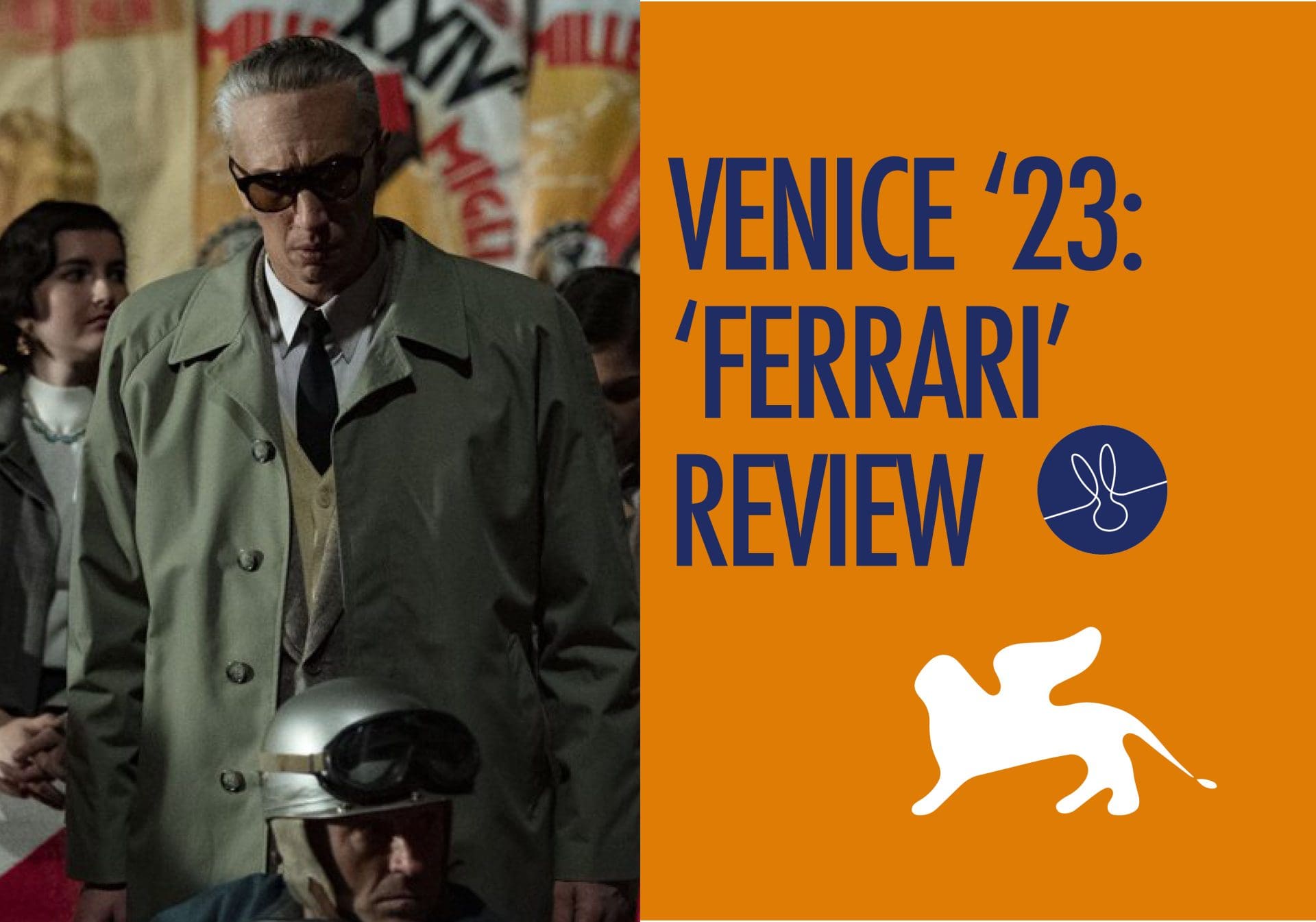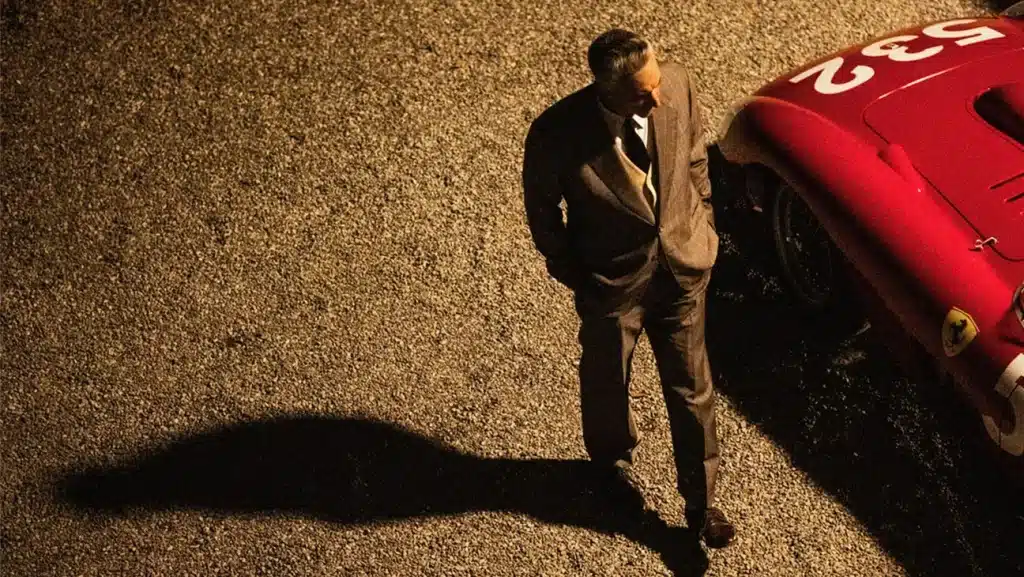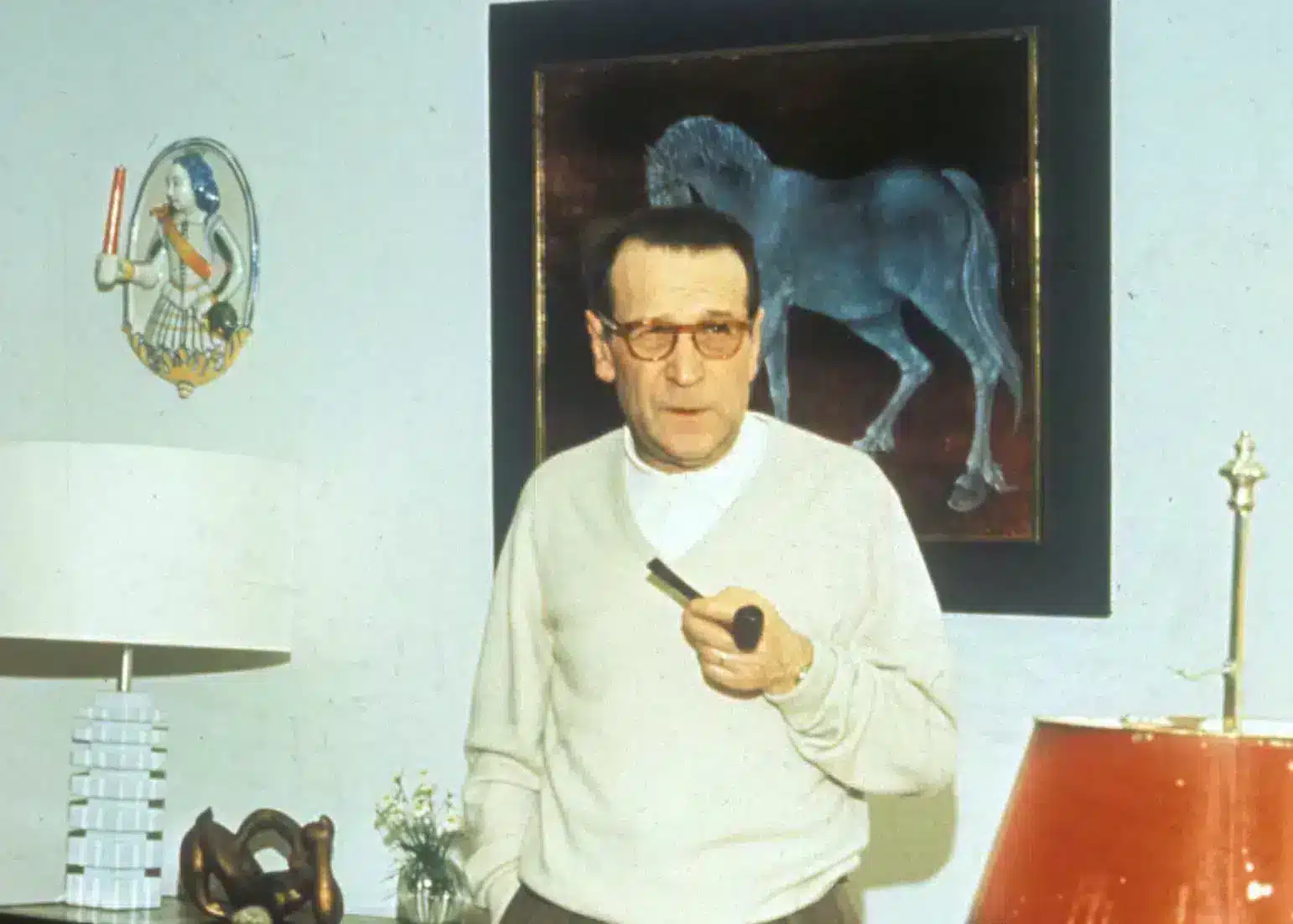
Leaving the Sala Dardena at the Venice Film Festival after watching Ferrari, it was curious to hear what the exiting Italian audience made of it. This is, after all, a biopic on one of their greatest sons, Enzo Ferrari—a key moment in his life depicted by the American maestro Michael Mann, with Ferrari himself played by Adam Driver.
Most were impressed. Others were bemused by the Americans’ attempts at recreating Italian accents or mannerisms; or perhaps that idealised version of its historical setting that the film—reminiscent of the slickness of The Crown or Rush—presents. Whatever the case, Mann is very careful in paying his respects not only to their national icon (here, a flawed but ultimately honourable figure that we root for, regardless of his mistreatment of his wife and apparent apathy for his drivers) but to the Prancing Pony’s significance to Italy.
Rather than going for a full-blown biopic, Mann instead opts for a character study of the entrepreneur during a particular, late season of his life. It’s a far better idea: over two hours, by focusing on his obsession to win the Mille Miglia race, his approach to death, to fear, his family, love, the financial well-being of his company, his heir, and the ghosts that haunt him from his past—most notably his first son Dino—are all masterfully revealed in their own time. Enzo, much to the chagrin of his accountant, is really not bothered about selling cars. He wants to race them.
Matters become even more complicated when his company is threatened into bankruptcy, when his driver dies, and his wife Laura—played with brute vulnerability by Penelope Cruz, in a performance that steals the show—slowly becomes aware of his secret family. On the surface, Enzo is presented as another man who makes mistakes, and is having to deal with them.
But he isn’t just another man, of course: he is Enzo Ferrari, “the jewel in the crown of Italy”, and the pressures of his life are met with the expectations and exaltations of an entire nation, who count on him to win at all costs.
Because there are a number of plots given an equal amount of attention in Ferrari, the tone can sometimes shift abruptly—and I wonder if there is a longer, unedited cut of the film. You get a particular feel for this when going between the slow, poignant dialogue between Enzo and Laura, and the thrilling, high-octane racing scenes, which are by far Ferrari’s highlight; especially because they’re given a certain amount of tragic, subversive gravitas in one scene that visibly froze the entire audience at our screening. Whatever the case, in Michael Mann’s hands, each of his plots are masterfully tied up—their outcomes quietly alluded to in earlier scenes, and only made apparent much later. Indeed, as brilliant as Ferrari is, a second viewing might make the experience even better.

Most of the headlines will surround Adam Driver’s performance—whose Ferrari is a wide-framed, awkwardly-moving giant that almost feels somewhat like Dracula, forever in straight-shouldered black tailoring, and coming out with fatalistic turn-of-phrases about love and victory. Driver’s Enzo Ferrari is not realistic. It is theatrical. And that’s what makes him such an enigma to watch on-screen.
In a year where Christopher Nolan’s Oppenheimer was supposed to be the biopic of 2023, Ferrari is a film that is, in my opinion, both more successful, and entertaining, in how it depicts its subject. This is tightly edited, sometimes tonally odd film, but our questions are answered by the film’s end; making it a satisfying study of one of the most important entrepreneurs in history, and one that we’ll be unafraid to visit in the hopes to learn something new.
Michael Mann introduces us to an Enzo Ferrari at his most human—which in Italy, where the idols of the motoring world are worshipped like gods—is a magnificent triumph.



